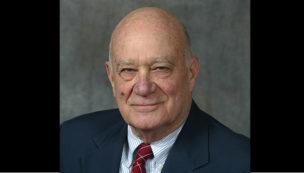Our immigration challenges, over many years, have been so complex that most elected officials are unwilling to make efforts to seek common sense resolutions. Can those in power be energized by citizens whose attention to immigration issues has been increasing?
Historians remind us that there are significant parallels between what is happening now in the U.S. and the conduct in our nation during the 1920s.
During that most restrictive decade in immigration history, the national government, as well as multitudes of American-born citizens, fostered and celebrated restrictive policies and xenophobic hostilities.
Wall Street Journal columnist Walter R. Mead writes that “draconian restrictions” were imposed in 1923.
As we strive for decisions that will define the 2020’s – and beyond – will perspectives from excesses of a century ago help to inform our essential policy questions and conduct?
Then, as now, the U.S. (like all nations) decides how many immigrants it will admit. Numbers matter in terms of economic needs and impact, as well as how the newcomers will affect their new country in a plethora of other ways, including security.
Which immigrants will be favored is always a priority question – from which nations, for what reasons?
There are probably few Americans today who have studied history closely enough to know how bigoted the first quota acts were of the 1920s. The U.S. government blatantly showed hostility to immigrants and ethnics who had been arriving since 1890.
Southeastern Europeans (primarily Italians and Jews – nearly 5 million of them) were called the “new” immigrants.
At their peak in 1907, 1.2 million came. The “old” immigration (from Northern and Western Europe peaked in 1886 at about 750,000). Even more worrisome than rising numbers of newcomers were their places of origin.
At the 1886 peak, 83 percent came from Northern and Western Europe, only 17 percent from Southern and Eastern Europe. By 1907, the proportions had almost completely flipped: 19 percent from the “old;” now 81 percent from the “new.”
The House of Representatives had set up the Dillingham Commission to reconsider immigration policies. It investigated for years and produced the most bigoted reports ever made by a U.S. government body.
Congress declared all kinds of dangers and an “immigration emergency” from the new arrivals – at one point passing a bill to suspend all immigration for an indeterminate period. That effort was blocked by the Senate. Three different Presidents used their veto power to block other restrictive Congressional bills.
However, the most defining measure by Congress was Reed-Johnson Act passed in 1924 by the Republican-controlled Congress.
The Quota Act of 1921 (the year my father arrived) had reduced Italian immigration by 85 percent and Russian by 87 percent. But, as Tyler Anbinder, emphasizes in “City of Dreams,” “most Americans believed that there were still too many southern and eastern Europeans arriving on their shores.”
The 1924 law reduced the annual total from 350,000 to 150,000.
Fiorello LaGuardia condemned his fellow Republican congressmen, stating: “The mathematics of the bill disclose the intentional discrimination against the Jews and the Italians.”
Asians were banned completely from immigration in 1924. James Gallivan, a Boston congressman, said during the House floor debate: “Now the doctrine of superiority which was originally sponsored in this country by the Ku Klux Klan seems to have found expression in this proposed legislation.”
Such official positions from Congress fueled the extreme xenophobia and violence that characterized the 1920s. The great historian C. Vann Woodward noted that sometimes governments give their citizens “permissions to hate.”
And hate spewed from millions of native-born Americans during the 1920s, especially with the rebirth of the Ku Klux Klan, expanding from 5,000 to 5 million members. In that decade, the Klan added Catholics and Jews to its anti-black hate list.
The re-energized Klan reached into the North and East – New Jersey, Queens County (where Fred Trump was unmasked at a Klan rally) to Mineola, Freeport, and, especially, to Suffolk County (where estimates are that one of seven adults were Klan members during the 1920s).
Then, as now, much of the bigotry reflected rural residents’ hostilities toward the growing cities. Many rural places in New Jersey, privileged parts of Queens where Fred Trump lived, and still rural Nassau and Suffolk shared rising negative views of urban areas.
It’s not hard to grasp why that occurred. The cities were gaining more power with population numbers, and that was because those new immigrants arriving since 1890 were living there.
In his brilliant book, “The Nervous Generation,” Roderick Nash shows that the 1920s involved a political and cultural battle by declining rural America against rising urban America (sounds like 2016 and 2018 elections with the geography of Trump’s white rural supporters contesting with urban folks who have much greater diversity).
American eugenics societies had been advising White Anglo Saxon Protestants (WASPs) not to marry and procreate with inferior Southeastern European ethnic groups.
They would diminish the superior genetic stock, as well as the more desirable physical aesthetics that were claimed for people with Northwestern European heritage.
It is particularly ironic that the revived Klan went on lynching sprees against blacks, including several still in uniform after serving in World War I (perhaps reflecting a Klan anxiety that people would try to deliver on Wilson’s slogan that this was a war to “make the world safe for democracy”).
FDR had more than the economy in mind when he asserted at his inauguration: “The only thing we have to fear is fear itself.”
He went on to warn about “nameless, unreasoning, unjustified terror which paralyzes needed efforts to convert retreat into advance.”
Is it only a coincidence that Bob Woodward (who led the Watergate exposure of Nixon) entitled his book about Donald Trump’s presidency “FEAR?”

